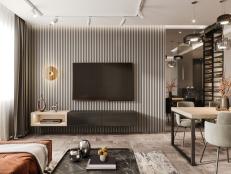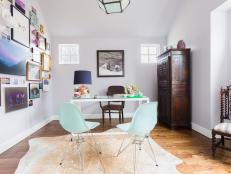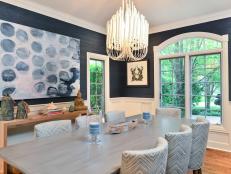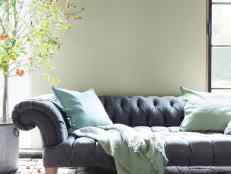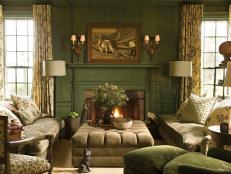Home Theaters Make a Splash

Jupiterimages
What's the difference between a simple, well-equipped family room with a home-theater system and a true media room or dedicated home theater that would make any audiophile or film buff truly happy?
"There's a big misconception out there that by simply plugging a surround-sound system into a fairly large TV (anything bigger than 27 inches), you have a home theater," says James Theobald, marketing director for Theo Kalomirakis Theaters of New York. "It takes a lot more than that."
Theobald’s firm specializes in dedicated home theaters, where the sole function is to view movies. He says that while a high-end media room provides a variety of uses for the family, both it and a dedicated home theater have certain requirements that make them stand out:
A Big Screen and Big Sound
"For true immersion in the theater experience, it all starts with a big screen. About 6 feet wide is a pretty good size," Theobald says. For larger rooms, 80 or 90 inches are usually the smallest sizes that justify a dedicated home theater. Ten-foot screens are about the maximum, as you would have to sit about 15 feet from the screen for optimal viewing.
A home theater needs at least a 5.1 system (five full-range speakers and one subwoofer) for total immersion in theater-like sound, where dialog, sound effects, background music and low-frequency (bass) emanate from specific speakers placed carefully about the room. But Theobald says many people are going with the new systems to really fill the room with sound.
Amplification
An A/V receiver with the proper decoder is required for multichannel audio formats. Some of these receivers have integrated amplifiers and equalizers; others house those components separately. Most manufacturers package their components together, a convenience for the consumer. "You need to make sure all the components complement each other, and that there's enough amplification to drive the sound," Theobald advises.
The Essentials and Extras
Theobald says that most people are going for touchpad controls that integrate many systems. "People like to be able to enter their home theater, turn on the components, set the room temperature, dim the lights and close their shades all from one controller," he says.
Home theaters need substantial wiring, and structured wiring is a must. Some upper-end rooms even require fiber-optic wiring. He also recommends that contractors avoid skimping on wires that connect the components to each other. "Heavy-gauge speaker wire and patch cords enable a system to reach its full potential."
Media servers (often simply a powerful PC) allow users to store multiple entertainment formats (video, audio, photographs, etc.) and enjoy them through their television, computer or stereo system.
Professional home theater designers optimize acoustics by properly sizing the room and placing materials that properly absorb, reflect or diffuse sound. They also optimize sightlines by placing seating in an amphitheater style and at the proper distance from the screen.
Seamless integration of the electronics into the design of the room by placing components behind a wall or cabinet with hidden access and placing speakers in the ceiling or wall provides a clean, sleek look to the home theater.
Some pretty spectacular seating is available, such as recliners with massage and heat that are styled after true theater seats (only more plush). There are also specialized home theater seats with speakers and subwoofers hidden within.






